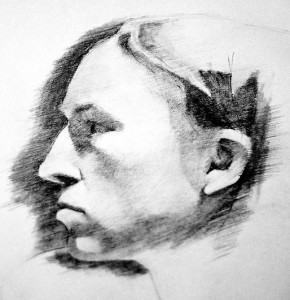Learning with elements of art
The craft of picture-making presents a platform for learning in visual design, perception and abstract concepts. The process of interpreting and translating from ideas or observation to a two-dimensional format helps to establish our own frameworks for understanding.
Lessons from Visual Language Teaching Guides for Art provide a comprehensive coverage of topics on shape, form, two-dimensional design and colour.
-
Pivotal concepts of drawing
 Drawing is a crucible where ideas for other art disciplines may be fashioned and explored. Line and tone are fused into shape and form, the foundations of visual expression.
Drawing is a crucible where ideas for other art disciplines may be fashioned and explored. Line and tone are fused into shape and form, the foundations of visual expression.Bridging concrete and abstract
Frameworks in design are useful in comparing characteristics of proportion, orientation, line, shape and tone. They help to bridge the transition from an abstract concept to concrete interpretation by setting up an unconditional benchmark.
-
Design Organization
Design organization is at work behind the scenes of any work of art. It determines how visual information is selected and displayed, and controls the pathway of communication and perception with the viewer.
Design Dynamics
The key to a picture’s impact is found in the connections established among its parts and the picture space. Use essential aspects of each element and coordinate their operation as a dynamic whole.
-
Understanding Colour
The link between drawing and colour is colour value—variations of light and dark. Value, along with saturation, are tools for building form and space through colour, as well as for increasing its range and effect.
Beyond Colour Theory
Colour theory is a system of organization that uses hue, light and dark values, and saturation to manage the vast range of colours and their dimensions. When using colour theory as a guide a more fluent expression is available.
